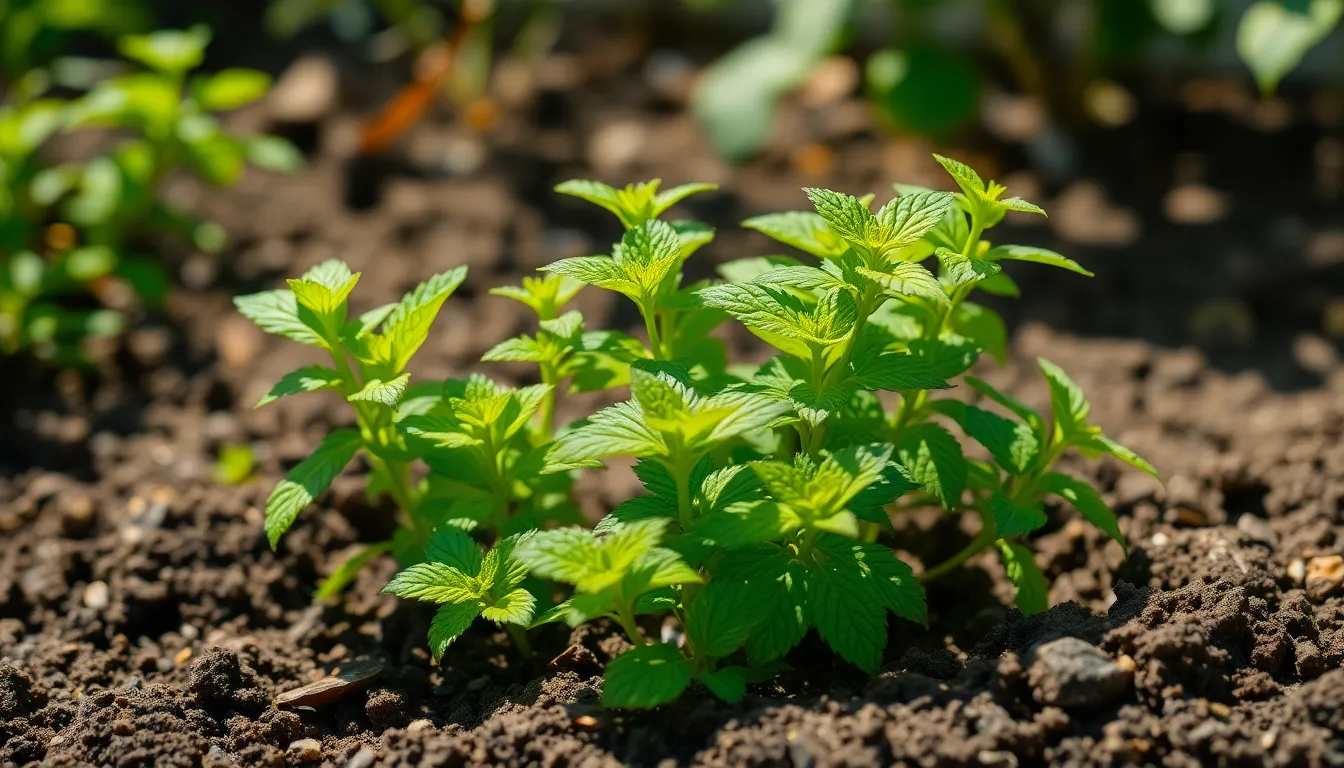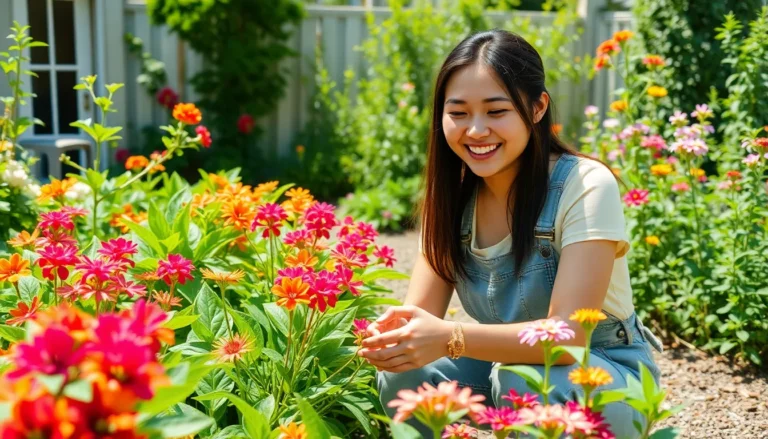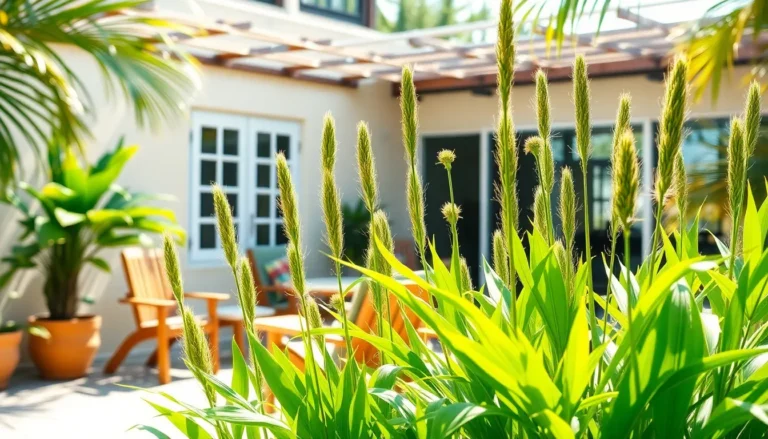Mint plants are the rock stars of the herb world. With their refreshing aroma and vibrant green leaves, they can elevate any dish or drink from ordinary to extraordinary. But like any diva, mint requires a bit of TLC to thrive. If you’ve ever wondered why your mint looks more like a sad wilted leaf than a lush garden superstar, you’re not alone.
Understanding Mint Plant
Mint plants are popular herbs, known for their refreshing aroma and diverse uses. They thrive with the right care, and understanding their varieties is essential for successful cultivation.
Types of Mint Plants
Peppermint stands as a well-known type, featuring a sharp flavor perfect for teas and desserts. Spearmint, with its sweeter taste, finds common use in culinary dishes and drinks. Chocolate mint offers a unique twist, combining a minty flavor with chocolate notes, appealing in desserts and beverages. Other types include apple mint, which emits a fruity scent and pairs well with salads, and lemon mint, known for its zesty aroma that enhances various dishes.
Benefits of Growing Mint
Growing mint provides several advantages. Fresh mint leaves enhance the flavor of beverages, salads, and entrees, elevating culinary experiences. Its natural aroma can also serve as an organic pest repellent, deterring common garden pests without harsh chemicals. Mint possesses medicinal properties, promoting digestion and relief from headaches. Additionally, cultivating mint indoors or outdoors contributes to the aesthetics of a garden, offering vibrant green foliage that adds visual interest.
Planting Mint

Growing mint successfully relies on choosing the right soil and providing ideal light conditions.
Choosing the Right Soil
Select well-draining soil to support mint plant health. A pH level between 6.0 and 7.0 is optimal for growth. Incorporating compost enhances soil quality, supplying necessary nutrients. Lightweight potting mixes often work well, especially in containers. Sandy loam offers excellent drainage for mint planted in gardens. Avoid compacted soil to prevent root rot and other issues. Consider mixing perlite with potting soil to increase aeration and drainage.
Ideal Light Conditions
Mint requires a good amount of sunlight for robust growth. Place it where it receives at least 4 to 6 hours of direct sunlight daily. Morning sun is beneficial, providing gentle light that warms the plant without causing stress. In extremely hot climates, partial shade during the afternoon protects mint from scorching. Not providing enough light can lead to leggy growth and diminished flavor. Make adjustments based on seasonal changes to maintain optimal growing conditions.
Watering Mint
Watering mint properly ensures healthy growth and vibrant foliage. This herb prefers consistently moist soil but can’t tolerate standing water.
Frequency of Watering
Water mint plants every 2 to 3 days during the growing season. Adjust the frequency based on climate conditions; increased heat may require daily watering. Misting the leaves can also help increase humidity, particularly in drier environments. Soil should remain damp but not waterlogged for optimal growth. Check the top inch of the soil; if it feels dry, it’s time to water. Containers may dry out faster, requiring more frequent checks for moisture.
Signs of Overwatering
Overwatering mint can lead to root rot and other problems. Yellowing leaves indicate too much water, while wilting even in moist soil points to issues. Mold on the soil surface also suggests excessive moisture levels. Look for blackened stems, which signal that roots are rotting due to poor drainage. Adjusting the watering schedule or ensuring better drainage can help mitigate these issues. Proper monitoring keeps the plants healthy and thriving.
Pruning and Maintenance
Pruning and maintenance play crucial roles in keeping mint plants healthy and productive. Regular pruning encourages new growth and promotes a bushy appearance.
When to Prune Mint
Pruning mint occurs throughout the growing season, with the best times happening in early spring and late summer. Early spring pruning stimulates robust, fresh growth after winter dormancy. Late summer pruning helps manage size and supports flowering, leading to vibrant foliage. Observing the plant’s growth is vital; signs of leggy stems or crowded leaves indicate the right moment for pruning.
Techniques for Effective Pruning
Effective pruning techniques ensure mint’s vitality. Use clean, sharp scissors or pruning shears to avoid damage or infection. Cut stems above a pair of leaves to encourage branching. Focus on removing any dead or discolored stems to enhance overall plant health. Regularly pinch back tips to promote fuller growth and prevent unwanted flowering. Maintaining this practice throughout the growing season supports continuous mint production and prevents overcrowding in the garden.
Pest and Disease Management
Mint plants can attract various pests and diseases that threaten their health. Recognizing these issues early helps ensure thriving plants.
Common Pests Affecting Mint
Aphids frequently infest mint, sucking sap and causing leaf distortion. Spider mites also pose a threat, leading to webbing and leaf discoloration. Whiteflies, though less common, may spread viruses and weaken plants. Other pests include caterpillars, which chew on leaves, and snails, which can decimate foliage. Monitoring plants for these critters allows for timely intervention.
Preventative Measures
Implementing preventative measures reduces pest infestations. Maintaining proper spacing between plants enhances air circulation and reduces humidity, deterring pests. Regularly inspecting leaves for signs of damage helps detect problems early. Introducing beneficial insects, such as ladybugs, naturally controls pest populations. Additionally, using organic insecticides can provide effective protection while remaining safe for the environment. Keeping the garden clean and removing debris decreases hiding spots for pests, promoting healthier mint growth.
Conclusion
Caring for mint plants can be a rewarding experience. With the right attention to soil, light, watering, and pruning, anyone can enjoy a thriving mint garden. These aromatic herbs not only elevate culinary creations but also add beauty to any space. By staying vigilant against pests and diseases, gardeners can ensure their mint remains healthy and productive. Embracing these care tips will lead to a lush harvest that enhances both flavor and fragrance in daily life. Whether grown in a garden or a pot, mint’s versatility makes it a must-have for any herb enthusiast.




